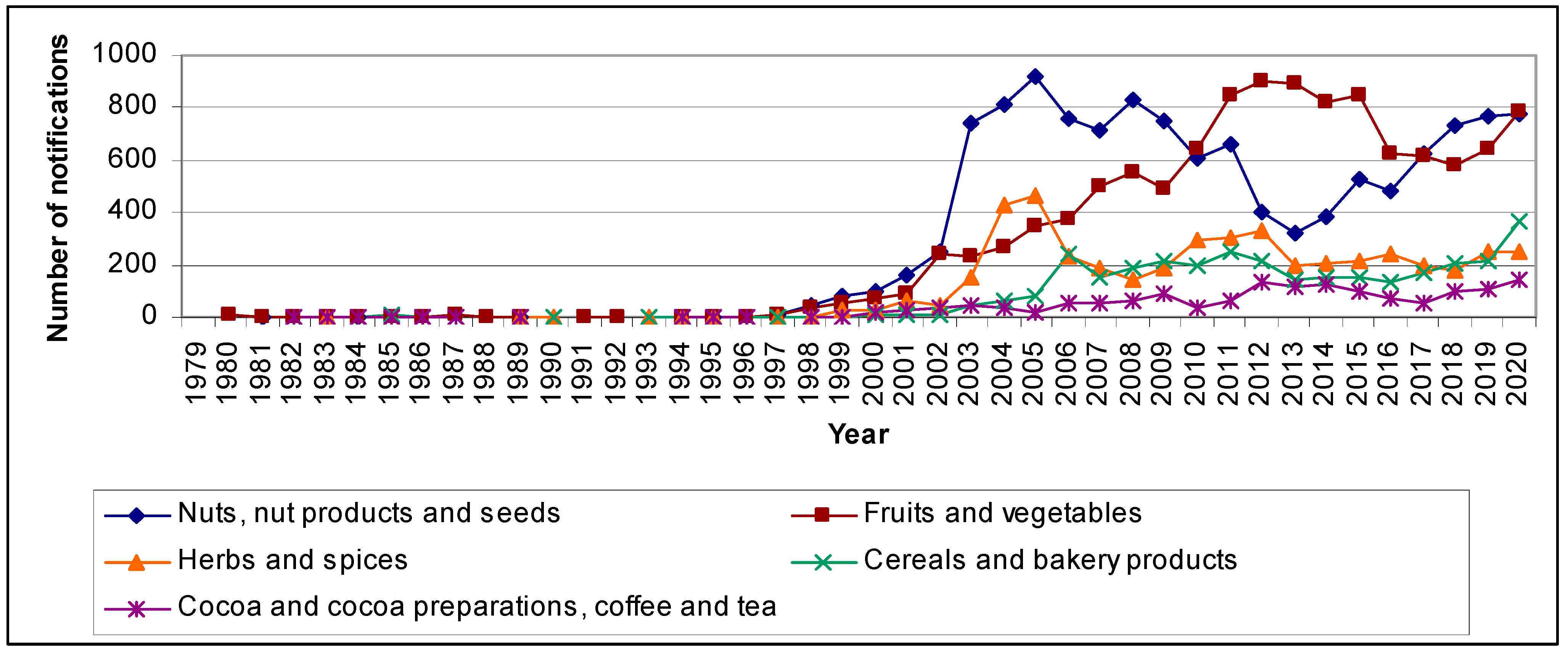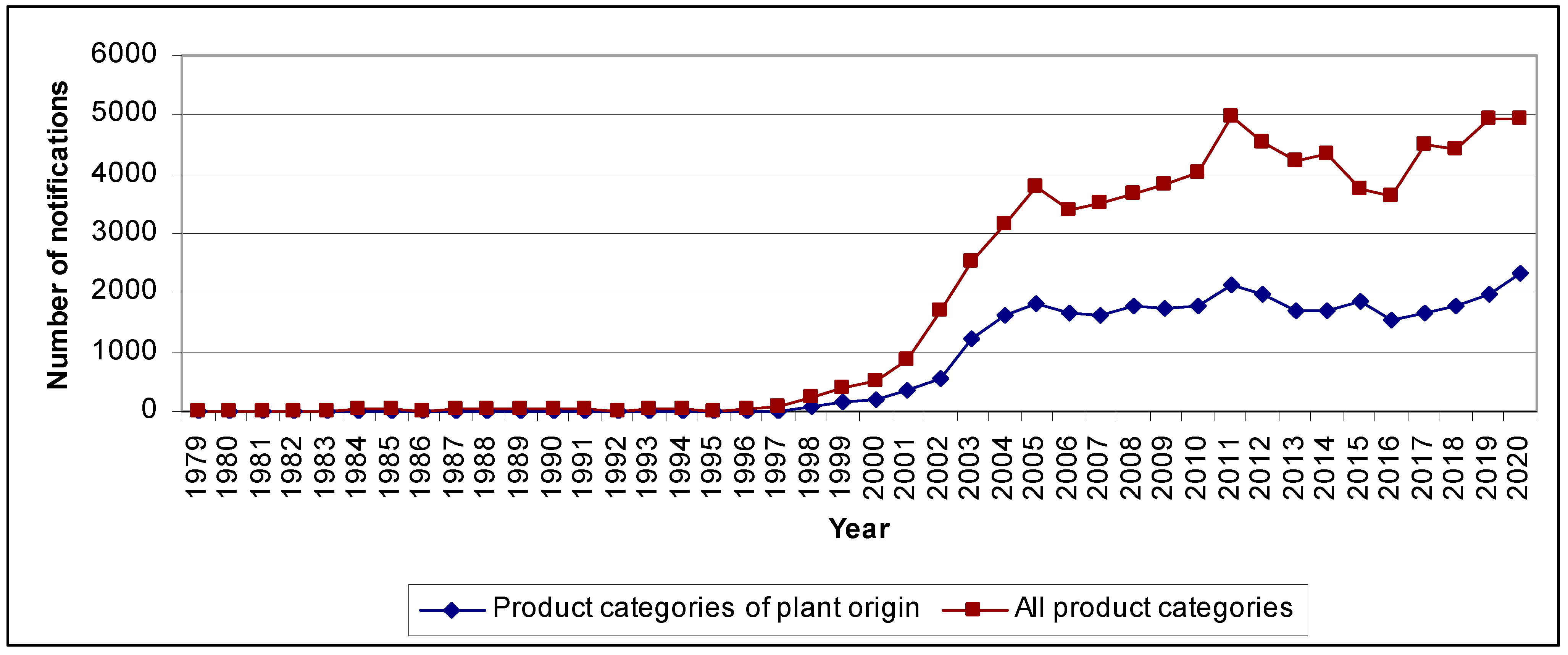Your browser does not fully support modern features. Please upgrade for a smoother experience.

Submitted Successfully!
Thank you for your contribution! You can also upload a video entry or images related to this topic.
For video creation, please contact our Academic Video Service.
| Version | Summary | Created by | Modification | Content Size | Created at | Operation |
|---|---|---|---|---|---|---|
| 1 | Magdalena Niewczas-Dobrowolska | -- | 1038 | 2023-05-31 12:59:17 | | | |
| 2 | Jessie Wu | + 5 word(s) | 1043 | 2023-06-01 03:37:41 | | |
Video Upload Options
We provide professional Academic Video Service to translate complex research into visually appealing presentations. Would you like to try it?
Cite
If you have any further questions, please contact Encyclopedia Editorial Office.
Pigłowski, M.; Niewczas-Dobrowolska, M. Rapid Alert System for Food and Feed. Encyclopedia. Available online: https://encyclopedia.pub/entry/45056 (accessed on 14 January 2026).
Pigłowski M, Niewczas-Dobrowolska M. Rapid Alert System for Food and Feed. Encyclopedia. Available at: https://encyclopedia.pub/entry/45056. Accessed January 14, 2026.
Pigłowski, Marcin, Magdalena Niewczas-Dobrowolska. "Rapid Alert System for Food and Feed" Encyclopedia, https://encyclopedia.pub/entry/45056 (accessed January 14, 2026).
Pigłowski, M., & Niewczas-Dobrowolska, M. (2023, May 31). Rapid Alert System for Food and Feed. In Encyclopedia. https://encyclopedia.pub/entry/45056
Pigłowski, Marcin and Magdalena Niewczas-Dobrowolska. "Rapid Alert System for Food and Feed." Encyclopedia. Web. 31 May, 2023.
Copy Citation
In the European Union (EU), the Rapid Alert System for Food and Feed (RASFF) is in place to provide information on risks in the food chain. The largest number of notifications in this system concerns plants, followed by products of animal origin and other products.
food safety
food hazards
plants
RASFF
cluster analysis
1. Introduction
A sustainable global future should consider food security and food safety, taking public health into account to achieve long-term sustainability. According to the World Health Organization (WHO) definition, food security exists “when all people, at all times, have physical and economic access to sufficient, safe and nutritious food to meet their dietary needs and food preferences for an active and healthy life”. This is closely linked to economic growth, social progress, political stability and peace. It should be noted that food safety can be recognised as a component of food security, as this refers to the fact that food is safe to eat and does not pose a risk to human health [1]. Food safety should include the sustainable development of the agri-food sector [1][2]. Thus, both sustainability and future food security require the consideration of food safety [1][3].
The most important challenge to food security and food safety is the growing human population [4]. However, it is important to point out that this mainly concerns developing countries. Considering sustainability in the context of food, it is noteworthy that in developing countries, attention is focused on food security, and in developed countries, on food safety [5]. Given this discrepancy, it therefore seems important to pay attention to the movement of food from developing countries to developed countries. In order to reduce the risk of foodborne disease hazards, developing countries that trade in food should have an integrated and inclusive development policy with regard to food security [6].
In the Sustainability Assessment of Food and Agriculture systems guidelines issued by the Food And Agriculture Organization of the United Nations (FAO), food safety is mentioned in the theme “Product quality & information” within the economic resilience dimension. In this document, food safety hazard is defined as “a biological, chemical or psychical agent in, or condition of, food with the potential to cause an adverse health effect” [7]. Among the biological agents, there are, for example, mycotoxins and pathogenic micro-organisms; chemical agents can include pesticide residues, and physical agents comprise foreign bodies [8].
According to the requirements for food safety included in the European law, food that is injurious to health is considered unsafe and should not be placed on the market [9]. Therefore, the Rapid Alert System for Food and Feed (RASFF) was established to provide information on risks in the food chain. During the period 1979–2020, the largest number of notifications in this system related to food of plant origin (more than 43%), followed by food of animal origin (30%), with the remaining notifications referring to other types of food, feed and food contact materials [8].
2. Characteristics of the Rapid Alert System for Food and Feed
Currently, the legal basis for the operation of the RASFF is the Regulation (EC) No. 178/2002, laying down the general principles and requirements of food law, establishing the European Food Safety Authority, and setting up procedures in matters of food safety. This Regulation obliges each RASFF member to report to the European Commission with information on any serious health risks deriving from food or feed. The members of the system are the 27 countries of the European Union (EU), the European Commission, the European Food Safety Authority (EFSA), the European Free Trade Association Surveillance Authority (ESA), Norway, Liechtenstein, Iceland, and Switzerland [9][10].
Alert notifications are sent when food presenting a serious risk is already on the market, and also after the control at the external borders of the EU (in a broader sense, the European Economic Area (EEA)), if there is potential hazard, and when rapid action is required. The RASFF member who identifies the risk takes appropriate measures (e.g., a product withdrawal) and transmits the alert. In turn, other members of the system check whether the product in question is on their markets and, if so, also take appropriate measures. Information notifications are used when a risk in food or feed has been identified but other RASFF members do not need to take rapid action because the product has not reached their market or is no longer on their market, or the nature of the risk does not require rapid action. Border rejections may concern products that have been tested and rejected at the external borders of the EEA. Notifications of this type are sent to all other EEA border posts in order to introduce controls and prevent the rejected product from entering the EEA via another border post [9][10].
3. Products of Plant Origin in the Rapid Alert System for Food and Feed
Among the product categories reported in the RASFF, the following can be considered as products of plant origin: cereals and bakery products, cocoa and cocoa preparations, coffee and tea, fruits and vegetables, herbs and spices and nuts, nut products and seeds (all product categories that appeared in the RASFF in the period 1979–2020 are shown).
Notifications reported in the RASFF between 1979 and 2020 on products of plant origin are shown in Figure 1. During the period in question, 33,264 notifications were made regarding these products, representing more than 43% of the notifications in the system.

Figure 1. Number of notifications for product categories of plant origin in the RASFF in 1979–2020.
The largest number of notifications concerned nuts, nut products and seeds and fruits and vegetables (37% and 35%, respectively, of all notifications to plants in the period 1979–2020). Between 2009 and 2010, a 27% decrease in the number of notifications to nuts, nut products and seeds can be observed, and, in 2009, a 12% decrease in the number of notifications to fruits and vegetables can be seen. This may be related to the introduction of border rejections in the RASFF in 2008. However, in 2010, there was already an increase in the number of notifications for fruits and vegetables, and a slow growth for nuts, nut products and seeds, with around 800 notifications for both categories in 2020.
Annually, the RASFF reports approximately 2000 notifications on products of plant origin, accounting for a significant share of the notifications on all product categories, i.e., 4000–5000 per year (Figure 2).

Figure 2. Number of notifications on product categories of plant origin and all product categories in the RASFF in 1979–2020.
References
- Ene, C. Food Security and Food Safety: Meanings and Connections. Econ. Insights Trends Chall. 2020, IX, 59–68.
- Răbonţu, C. Food Safety and its Role in the Evolution of Food Trade. An. Univ. “Constantin Brâncuşi” Din Târgu Jiu Ser. Econ. 2010, 2, 161–172.
- Vågsholm, I.; Arzoomand, N.S.; Boqvist, S. Food Security, Safety, and Sustainability—Getting the Trade-Offs Right. Front. Sustain. Food Syst. 2020, 4, 16.
- Garcia, S.N.; Osburn, B.I.; Jay-Russell, M.T. One Health for Food Safety, Food Security, and Sustainable Food Production. Front. Sustain. Food Syst. 2020, 4, 1.
- Aiking, H.; de Boer, J. Food sustainability: Diverging interpretations. Br. Food J. 2004, 106, 359–365.
- Pozza, L.; Field, D.J. The science of Soil Security and Food Security. Soil Secur. 2020, 1, 100002.
- FAO (Food and Agriculture Organization of the United Nations). SAFA Sustainability Assessment of Food and Agriculture Systems Guidelines, 3rd ed.; FAO: Rome, Italy, 2014.
- RASFF Notifications Pre-2021 Public Information. Available online: https://data.europa.eu/data/datasets/restored_rasff?locale=en (accessed on 25 March 2022).
- European Parliament; Council of the European Union. Regulation (EC) 178/2002 of the European Parliament and of the Council of 28 January 2002 Laying Down the General Principles and Requirements of Food Law, Establishing the European Food Safety Authority and Laying Down Procedures in Matters of Food Safety; OJ L 31, 1.02.2002; European Parliament and Council of the European Union: Brussels, Belgium, 2002; pp. 1–24.
- RASFF—Food and Feed Safety Alerts. Available online: https://ec.europa.eu/food/safety/rasff-food-and-feed-safety-alerts_en (accessed on 3 November 2022).
More
Information
Contributors
MDPI registered users' name will be linked to their SciProfiles pages. To register with us, please refer to https://encyclopedia.pub/register
:
View Times:
1.4K
Revisions:
2 times
(View History)
Update Date:
01 Jun 2023
Notice
You are not a member of the advisory board for this topic. If you want to update advisory board member profile, please contact office@encyclopedia.pub.
OK
Confirm
Only members of the Encyclopedia advisory board for this topic are allowed to note entries. Would you like to become an advisory board member of the Encyclopedia?
Yes
No
${ textCharacter }/${ maxCharacter }
Submit
Cancel
Back
Comments
${ item }
|
More
No more~
There is no comment~
${ textCharacter }/${ maxCharacter }
Submit
Cancel
${ selectedItem.replyTextCharacter }/${ selectedItem.replyMaxCharacter }
Submit
Cancel
Confirm
Are you sure to Delete?
Yes
No




